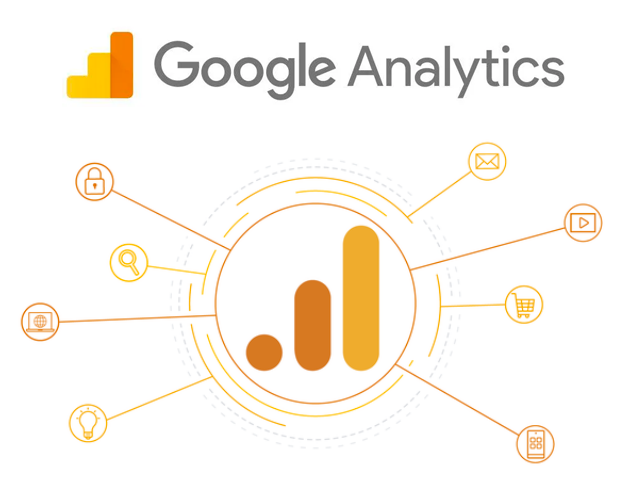Optimize Your Internet Site Performance With Google Analytics Monitoring Code
In the electronic landscape, understanding user interactions with your internet site is essential for optimization. This calculated execution not only informs your choices yet also paves the method for a much more interesting customer experience.
Understanding Google Analytics
Understanding Google Analytics is vital for web site proprietors and online marketers aiming to enhance their on the internet visibility. This effective device gives critical insights into user behavior, allowing stakeholders to make data-driven decisions. By tracking various metrics, such as page views, bounce prices, and customer demographics, Google Analytics aids recognize which facets of an internet site are executing well and which call for improvement.
One of the vital features of Google Analytics is its capacity to sector data. Users can analyze website traffic resources, individual engagement, and conversion prices throughout different sectors, such as geographical places or device kinds. This granularity allows online marketers to tailor their approaches to certain audiences, therefore improving the effectiveness of their projects.

Establishing Monitoring Code
To harness the full possibility of Google Analytics, setting up the tracking code appropriately is an essential action. The tracking code, a snippet of JavaScript, allows Google Analytics to collect information regarding customer interactions on your website. To start, log in to your Google Analytics account and browse to the Admin section. Under the Residential or commercial property column, pick "Tracking Details" and then "Monitoring Code." Here, you will certainly find your one-of-a-kind tracking ID, which starts with "UA-" followed by a collection of numbers.
Next, you'll need to install this code into the HTML of your site. Preferably, place the tracking code simply prior to the closing tag on every page you want to monitor. If you're utilizing a material management system (CMS) like WordPress, think about utilizing plugins that facilitate easy combination.
After carrying out the code, it's crucial to verify its performance. Use the "Real-Time" records in Google Analytics to validate that information is being collected as expected. By making certain appropriate arrangement, you develop a solid foundation for effective data analysis and tactical decision-making to improve your web site's efficiency.
Secret Metrics to Screen
Regularly keeping track of essential metrics in Google Analytics is necessary for examining your internet site's efficiency and individual interaction. Among the essential metrics to track are page views, which provide understanding right additional info into exactly how typically individuals go to different pages on your website. In addition, one-of-a-kind site visitors assist you understand the reach of your content by indicating the number of distinctive individuals are engaging with your website over an offered duration.
Bounce rate is one more essential statistics, exposing the percentage of visitors that leave your site after viewing just one web page. A high bounce rate might signify problems with content importance or individual experience. Conversely, session period suggests how lengthy site visitors remain on your website, assisting you gauge web content efficiency and customer rate of interest.
Conversion rates are essential for determining the success of your website in attaining particular objectives, such as type entries or product purchases (when does the google analytics tracking code send an event hit to analytics?). Keeping track of website traffic resources is likewise key, as it aids recognize which networks drive the most traffic and conversions, enabling even more targeted advertising and marketing methods
Analyzing Site Visitor Habits

Furthermore, tracking user paths through the website helps disclose typical navigating patterns. This info is important in establishing whether individuals can easily discover the content they look for or if they encounter challenges that lead to stress. Determining high leave pages can highlight locations that may require redesign or even more appealing web content to maintain visitors.
In addition, segmenting customers based on demographics, passions, and actions offers a much deeper understanding of the target audience. This division allows companies to tailor material and marketing techniques extra efficiently, raising the likelihood of conversions. Eventually, assessing visitor habits not just educates website enhancements yet additionally fosters a much more user-centric technique, bring about improved fulfillment and commitment over time.
Executing Data-Driven Modifications
Carrying out data-driven adjustments is important for improving web site efficiency and attaining organization goals. By leveraging insights gathered from Google Analytics, companies can identify areas for improvement and make informed decisions to optimize user experience.
First, evaluate essential performance indicators (KPIs) such as bounce rates, session duration, and conversion rates to determine specific concerns influencing customer involvement - when does the google analytics tracking code send an event hit to analytics?. As an example, a high bounce price on a touchdown page may indicate that the content is not reverberating with site visitors or that the web page takes as well long to load

Final Thought
In conclusion, the implementation of Google Analytics tracking code is necessary for enhancing web site performance. By accurately keeping track of individual behavior and essential metrics, important insights look at this now can be gotten, assisting in data-driven decision-making.
By tracking numerous metrics, such as page views, bounce rates, and individual demographics, Google Analytics assists determine which elements of a site are performing well and which require renovation.
Users can analyze website traffic resources, individual engagement, and conversion rates throughout various sectors, such as geographic locations or tool kinds. The tracking code, a snippet of JavaScript, enables Google Analytics to accumulate information regarding user communications on your site.Consistently monitoring vital metrics in Google Analytics is necessary for evaluating your website's efficiency and individual interaction. By leveraging Google Analytics, site proprietors can acquire valuable understandings into just how individuals communicate with their website.